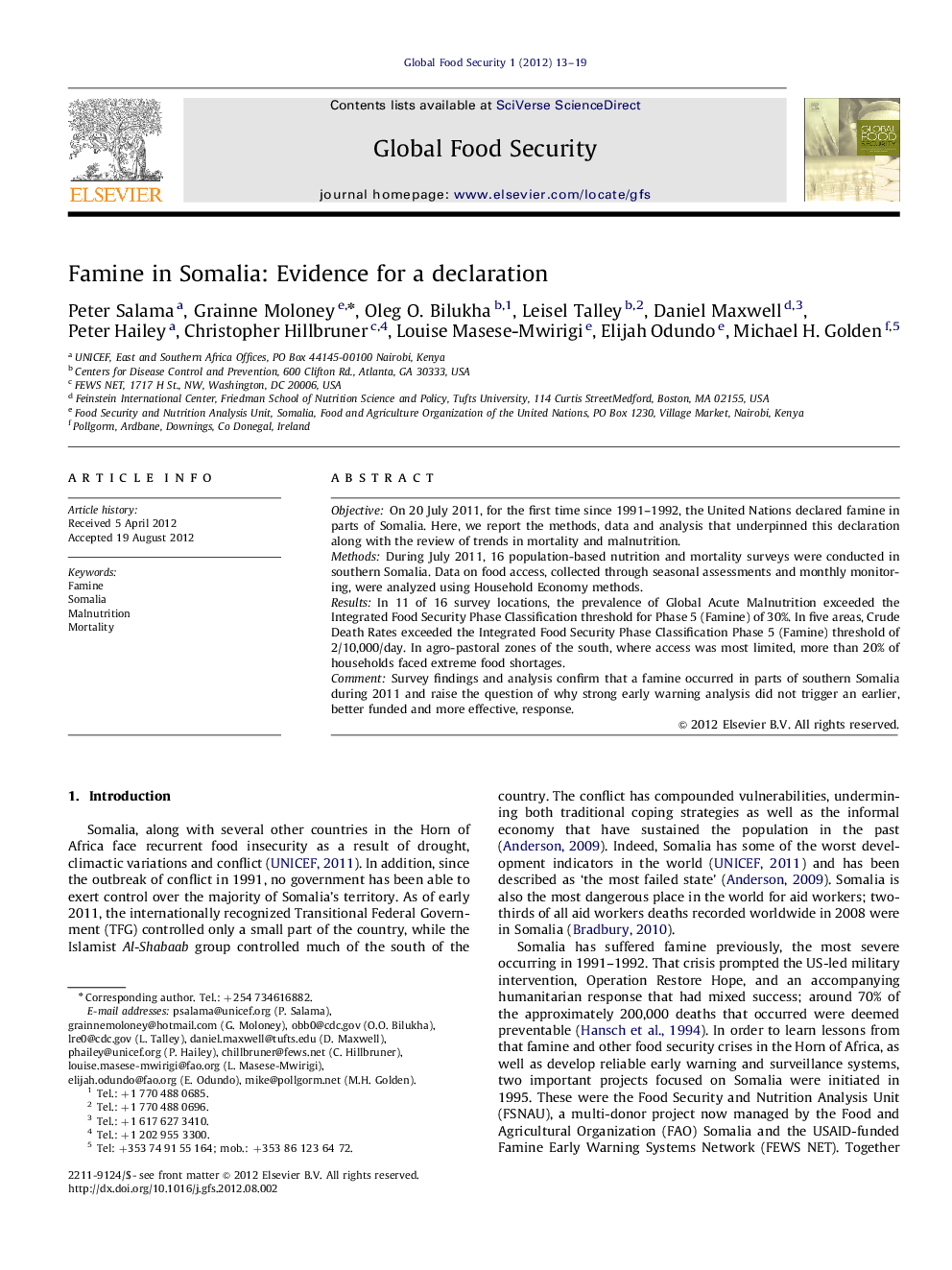| Article ID | Journal | Published Year | Pages | File Type |
|---|---|---|---|---|
| 1047617 | Global Food Security | 2012 | 7 Pages |
ObjectiveOn 20 July 2011, for the first time since 1991–1992, the United Nations declared famine in parts of Somalia. Here, we report the methods, data and analysis that underpinned this declaration along with the review of trends in mortality and malnutrition.MethodsDuring July 2011, 16 population-based nutrition and mortality surveys were conducted in southern Somalia. Data on food access, collected through seasonal assessments and monthly monitoring, were analyzed using Household Economy methods.ResultsIn 11 of 16 survey locations, the prevalence of Global Acute Malnutrition exceeded the Integrated Food Security Phase Classification threshold for Phase 5 (Famine) of 30%. In five areas, Crude Death Rates exceeded the Integrated Food Security Phase Classification Phase 5 (Famine) threshold of 2/10,000/day. In agro-pastoral zones of the south, where access was most limited, more than 20% of households faced extreme food shortages.CommentSurvey findings and analysis confirm that a famine occurred in parts of southern Somalia during 2011 and raise the question of why strong early warning analysis did not trigger an earlier, better funded and more effective, response.
► We detail the methods used in assessing food access, malnutrition, and mortality. ► We compare these results to the IPC Famine thresholds. ► We explore the challenges of data collection in such a complex emergency. ► We highlight the recent improvements in evidence based food security analysis. ► We recommend more ro/bust links between data and accountability for response.
